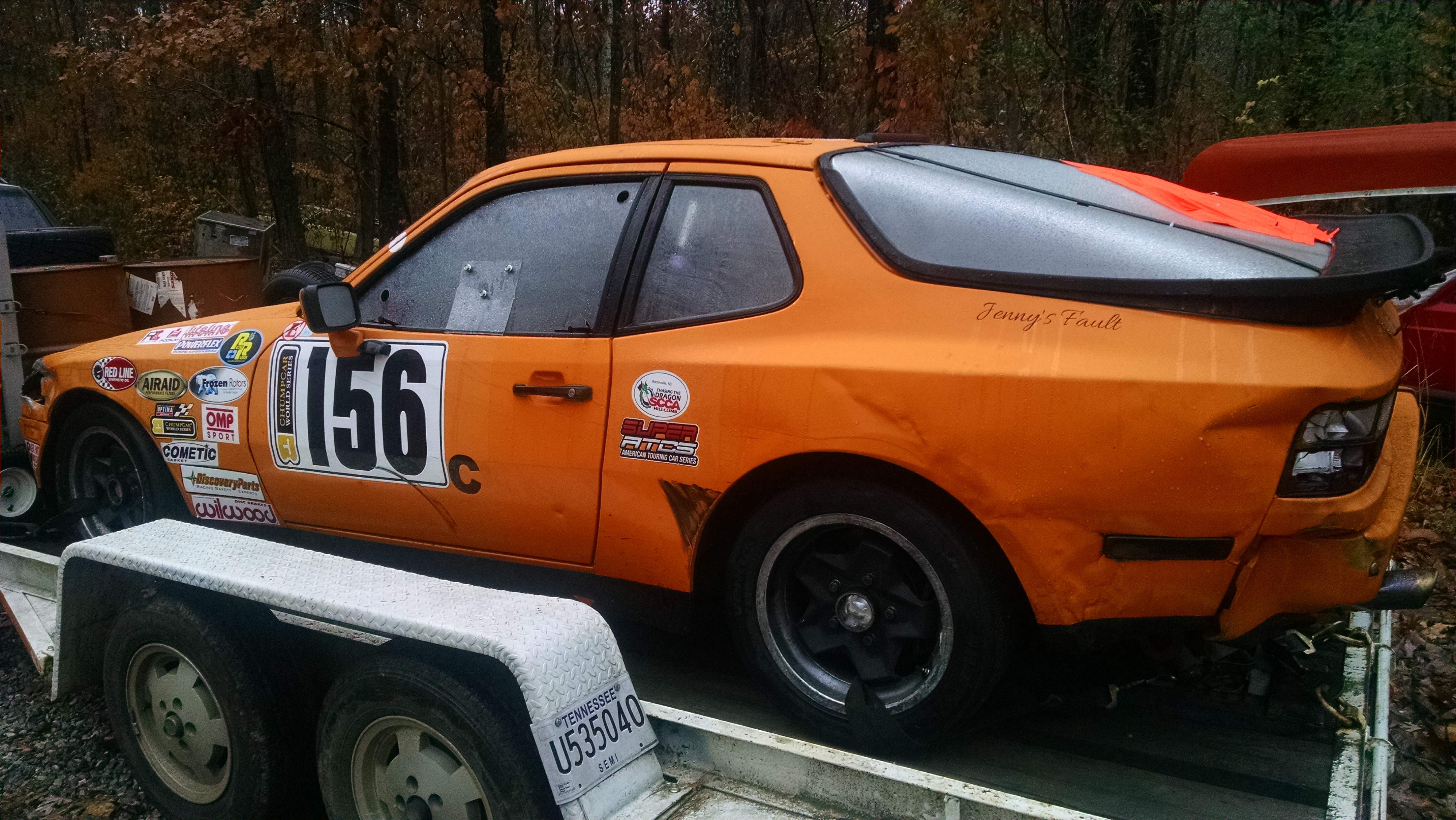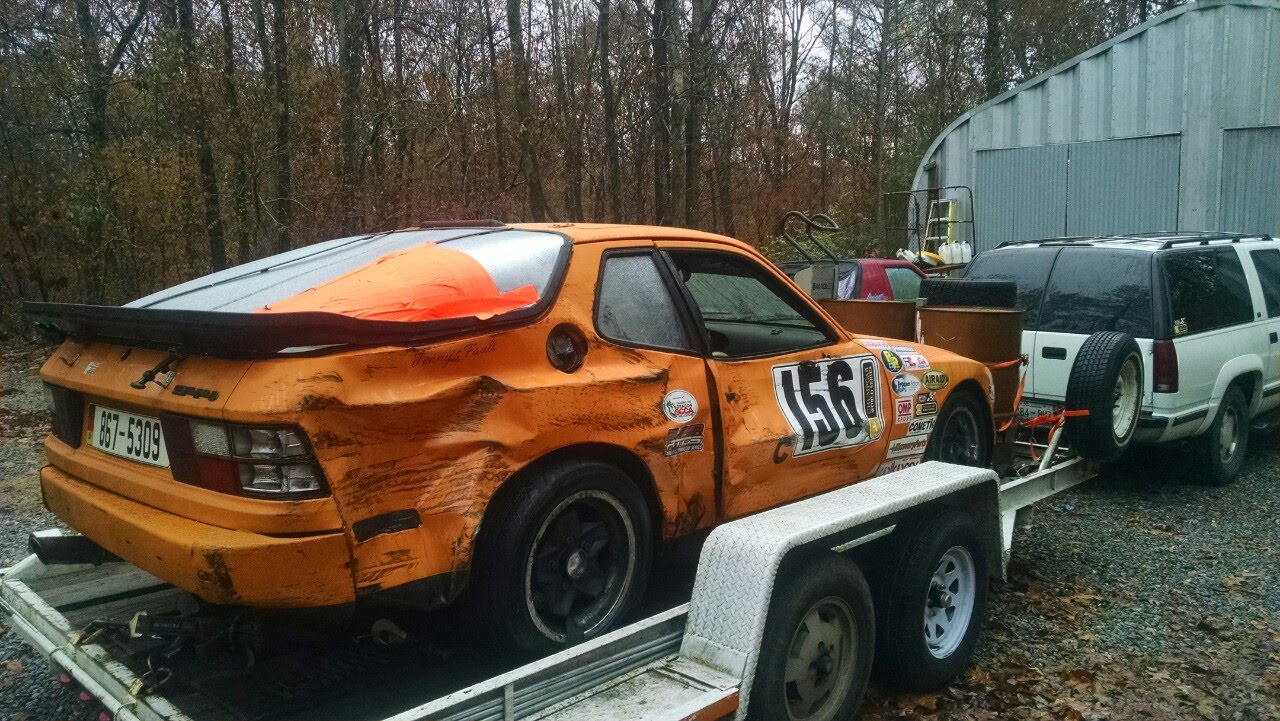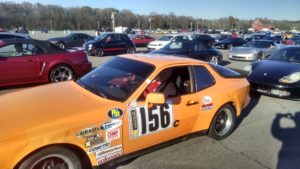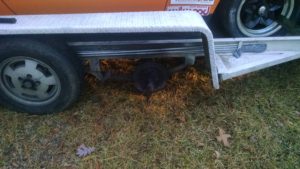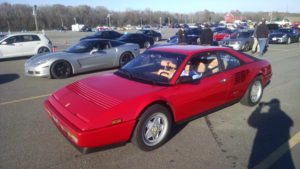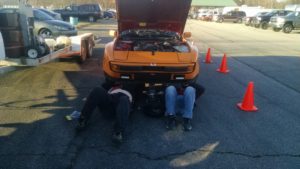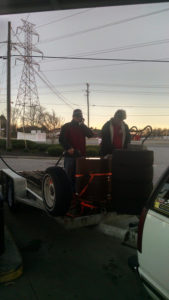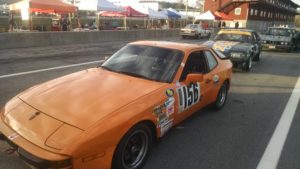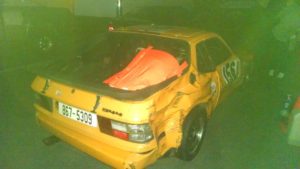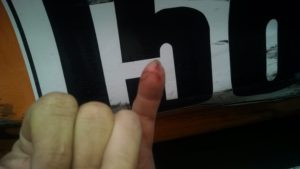A rough race for Porsche 944s
The adventure began with the seven hour tow to Virginia. VIR is located like most race tracks in the middle of nowhere. But VIR is different in that you can’t get there from here. You have to go somewhere else first them go to VIR. If you are in Virginia there is no road to take to the track that does not go through North Carolina on the way.
I looked at several options before choosing the fastest route according to Google maps. What I failed to notice in my route planning was the 9 mile long 9.5% down grade after getting off the interstate.
Normally this would not have been too bad however just as I was stopping for fuel earlier I had noticed a warning on my brake controller. There was a short somewhere. When I got on the twisty section I had made a quick attempt at diagnosis and found that if I switched off the front brakes, the fault would clear and I had at least one axle of trailer brakes. Normally this is plenty but for the long steep down hill run not quite so much.
I made my way carefully down the hill alternating between braking and cooling and lots of compression braking. I was very happy to get to the bottom after about twenty minutes of pucker.
Tom met up with me in Danville to get fuel. But we decided it was too far to haul the fuel to the cabin and back so we fueled only the race car for the Holiday Laps session on Friday. While fueling we noticed there was still a lot of heat coming off the trailer tires.
Evan booked us a nice cabin on the lake close to the track since there are no hotels nearby. The narrow driveway looked a lot like a Jeep trail but I found a place to park the trailer only a short walk from the cabin. It was dark and cold so I grabbed my gear and hopped in Tom’s car.
The next morning at dawn, I went to look at what it was going to take to get turned around. As I was scouting the path out, I noticed something odd about the trailer.
The right front trailer wheel hub and brake assembly was missing. In its place were a couple of worn bearing races. I have no idea when it left. I decided there was nothing left to do but drive on three wheels to the track and deal with it later.
I had no idea how poplar the Holiday laps program is at VIR. My GPS said I was still a mile from the gate when I stopped at the back of the line. And I thought we had gotten there early. Anyway, we paid our entry and then found a place to park where we could unload the car and work on the trailer.
We sent Evan out first and he got in a few paced laps. However when he came back the car was making a noise and the dash warning light was on. Popping the hood showed the alternator mounting bolt had backed out letting the belt slip. Unfortunately access to the adjuster requires removing our brake cooling duct. Not a bad job on the lift but a little awkward on jack stands in the parking lot.
With her belt back tight we sent Tom out to get in line. The line was now about 500 cars long. Evan and I realized he was going to be in line a while so we took Tom’s car to tractor supply and found a hub and a wheel and tire.
I also bought a chisel thinking I would hit the race and it would break off. The chisel was not near as hard as the bearing race and soon I just had a flat metal bar. Evan was able to find a grinder and cut off wheel with one of the better equipped teams. He also found a place to plug it in near where Chumpcar had tech set up.
The cut off wheel made short work of the bearing races. I had the new hub and wheel on while Tom was still waiting in line. He decided to let me take is stint so I waited a bit more and then took some paced laps of the full course. It is a very nice track with interesting elevation changes and different types of turns. However compared to COTA it is a bit narrow. All the run off areas are grass.
Tom got to wait in line again before he took his stint near the end of the day. We then bolted the brake ducts back in place and used the car to scoop a well-placed paddock spot before the trailers were allowed in.
Afterwards we took the trailer out to get 110 gallons of fuel. But in the excitement, we forgot to buy a couple of gallon jugs of water like we normally do.
We woke to a very cold morning on Saturday. We normally like to have our pits set up the night before but the track did not allow this. In fact it was almost time for the driver’s meeting before they allowed us in. We felt a bit rushed getting everything set up and somewhat organized.
Evan took the first stint and turned some very respectable times. The car seemed to be running well and handling well once the new Hankook tires warmed up a bit.
I took over for the second stint. I went slower being intimidated by the number of cars on the narrow track. I eventually got in the groove and had a good run. The only glitch being my radio microphone was not working. I could hear but not talk.
We made a quick driver swap to Tom. However in just a few laps he was back in with the engine hot. This is when I realized we never bought water. I used water bottles from the cooler while Evan went in search of more water. I was able to burp the system and get Tom going again. Evan ended up buying a fuel jug from the pro shop to hold water for future stops.
We put Evan in again in the afternoon. He was really mixing it up and turning fast laps when he got tagged by Neon in a critical spot. The impact sent him off into the grass and then hard into the tire wall. He then spun around and impacted the guard rail. In car video shows the violence of the crash. He was able to move slightly but had to get assistance back to the pit. The car still ran but would not move.
I quickly diagnosed the problem as a broken half shaft. And I had bought a spare just in case.
I crawled under the car and began removing the bolts. Thankfully none of them stripped out. We might have made it back on track on Saturday but the new in the box shaft had a problem that required it to be disassembled and reassembled to get the balls in place.
I had Phil the chief inspector come take a look at the car and give his blessing before we took it back out on track. He also took a look at our in car video to see who had hit Evan to push him off. We had to tape up the broken rear hatch and straighten the frame a bit to get it to latch.
Amanda said it felt like we were back in Harlan as we all worked together to get the car ready to race on Sunday. The other 944 teams stopped by to offer support and offered to loan us parts or tools as needed.
On Sunday morning I took the car out to rejoin the race. I was tentative at first but I picked up sped as I realized the car handled just fine. The tape on the rear window blocked my view a bit and the missing door mirror caused more problems. But I was able to run my full stint and turn the car over to Tom.
I did take the car to the paddock to torque the half shaft bolts. It was a good thing I did too since some had not seated well in the cold the night before. However in the process I suffered my least favorite moment of the weekend. Somehow I got my pinky finger pinched between the wrench and the wheel as someone outside the car tried to move the wheel so I could access the next set of bolts. The worst part was having to bring it back across the pinch point to get my hand out.
Jenny cleaned my injury and bandaged me up. Tom took over the car and headed back out on track. He was able to improve slightly on his previous lap times.
We made a quick swap to Evan. He was turning really good laps when he called saying he had alternator issues. Remembering the Friday experience, we checked the belt tension but it was fine this time. We took it to the paddock for further diagnosis.
My voltmeter was showing 14 volts at the battery but the dash meter was showing ten volts. Since the car was running fine I sent him back out assuming it was a wring glitch.
I took over for my last stint of the weekend. I was finally getting comfortable with the close proximity of other cars and learning my way around the track. Then I noticed a stumble in the car in a few corners. I saw the voltage was steadily dropping on the digital meter in the car.
I ran as long as I could but the stumble got worse and the engine began to cut out at times. I put it behind the wall and checked the system again. I still could not figure out why the battery read a higher voltage than the rest of the car. We reluctantly made the call to load it on the trailer rather than changing the alternator. I discovered after I got home that the battery was low in my voltmeter which made it give incorrect readings.
Overall it was quite an adventure. I was reminded of Neal’s comment: “racin’ is ‘spensive.” I do kinda wish I had changed the alternator and taken the car back out for what remained of the race. Just to say we didn’t quit. But we did gain a lot of new friends and respect among our fellow racers that we were able to get the car back on the track during the overnight stop. It was a long drive home in the rain but I made it home safely taking a different route that avoided the 9 mile 9.5% grade.
We ended up in 42nd place. I think we turned more laps than two of the other 944s. Visceral Racing’s 944 ended up in 38th place. All the 944s had issues both days.
Our plan is to have the car ready to race by the February event at Road Atlanta.
